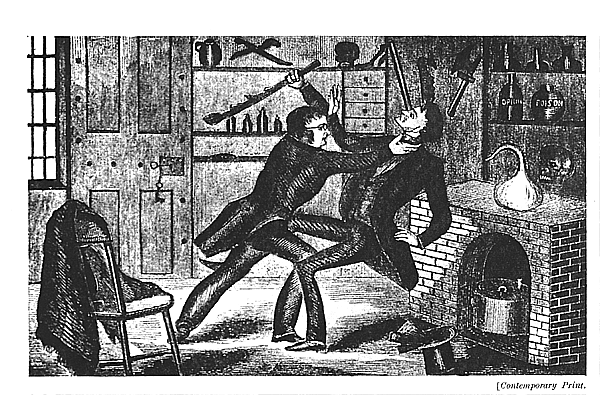
Source: Contemporary print reproduced in the Trial of Professor John White Webster, (New York: Charles Scribner's Sons, 1928), p. 32.
Discussion topics: What are Schama's goals in writing this section of Dead Certainties and how well does he achieve them?
Suggestions:
-sources for the argument? Sermons? Newspapers?
-argues that all 15 newspapers in Boston assumed Webster's guilt and merely speculated on the degree (intentional? manslaughter?), p. 181
-class conflict between Cambridge and Boston?, p. 184
-what to plead and who to plead it for him?
Schama's account of the trial.
-Where are the "200 pages" of Webster's own handwritten defense notes?
-Schama enters the mind of the prosecutor, and relates Webster's defense theories based upon the 200 pages; especially interesting is Webster's apparent unwillingness to name Littlefield the murder but rather to suggest that Littlefield was a resurrectionist who got cadavers whereever he could ("that body of a young girl from New Hampshire ..., p. 203).
-what were the key elements of the prosecution's circumstantial evidence?
-how did the defense handle these key elements? Why does Schama think that Judge Merrick muffed it?
-how important were the promisory notes in the bundle? Why?
-why were the seven witnesses, p. 241, not believed?
-how important was Judge Shaw's charge to the jury in the Jury's decision to convict?
-what did Webster say in his own defense? Why was he not on the stand earlier?
Phone: (o) 410-260-6401
Email: edp@mdsa.net